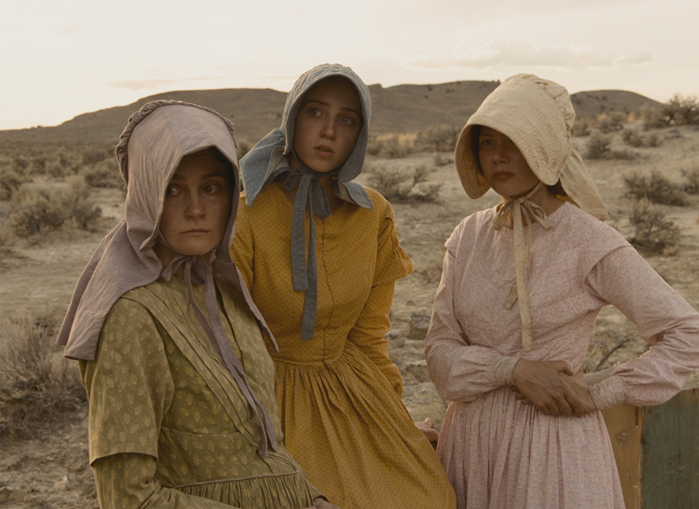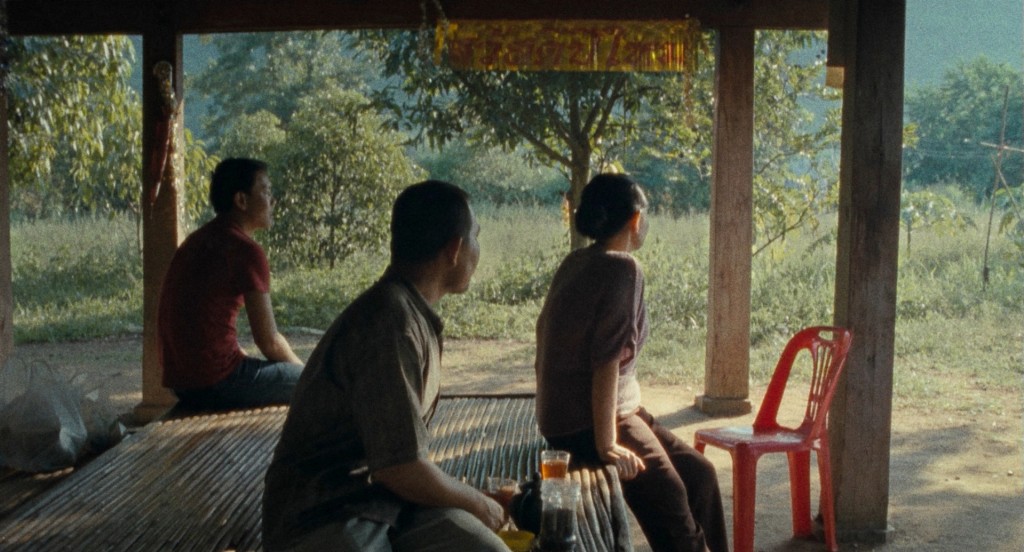 Earlier this month we offered a review of the seismic shifts in exhibition that characterized the last year. This week we offer a personal assessment of the films themselves.
Earlier this month we offered a review of the seismic shifts in exhibition that characterized the last year. This week we offer a personal assessment of the films themselves.
Moviegoing is most exasperating at the end of the year. The anointed awards contenders trickle out and carry with them a sense of obligation. I wind up seeing things not because I want to see them, exactly, but because I can’t bring myself to concede the conversation, however trumped-up and market-driven that conversation may be. Nevertheless, everyone has to draw the line somewhere. I can’t summon anything but apathy for The Iron Lady or Albert Nobbs. And if my understanding of cinema is impoverished by skipping Extremely Loud & Incredibly Close, I can live with that, too. (I wouldn’t want any part in a cinema where Extremely Loud & Incredibly Close was axiomatic.) Criticism, in general, would be better if we dropped the mantle of objectivity and laid out these prejudices up front.
VOLATILE OBJECTS
Expectations are pernicious things. The first time I saw The Tree of Life, I came in with sky-high expectations and left bewildered, actively irritated by its structure, its implicit claims to importance, its unexamined masculinity, its daffy spirituality. I couldn’t imagine sitting through it again (I wouldn’t want any part in a cinema where …), but I did just that the next week with a friend, who had more or less the same reaction I did the first time. But my own experience with it changed considerably: the jangled bits and pieces began to reveal larger structures, flash-forwards registered as such, the arbitrary became deliberate and deeply felt. And, more importantly, the major thing it describes—slowly outgrowing pre-digested notions of family and recognizing the profound injustice of an inherited order—emerged with painful clarity. That Malick records this acid disenchantment while simultaneously positing this very straight model of a mid-century Texas family as a plausible epicenter of the universe (or, more democratically, just as capable of unraveling its cosmic mysteries as anyone else) makes The Tree of Life a maddening, infinitely volatile object. (I’m afraid to see it a third time; in any case, I’ve come to prefer The Future, in which Miranda July deals with many similar issues on a more modest scale. It also describes a specific generational listlessness about the current recession with great acuteness.)
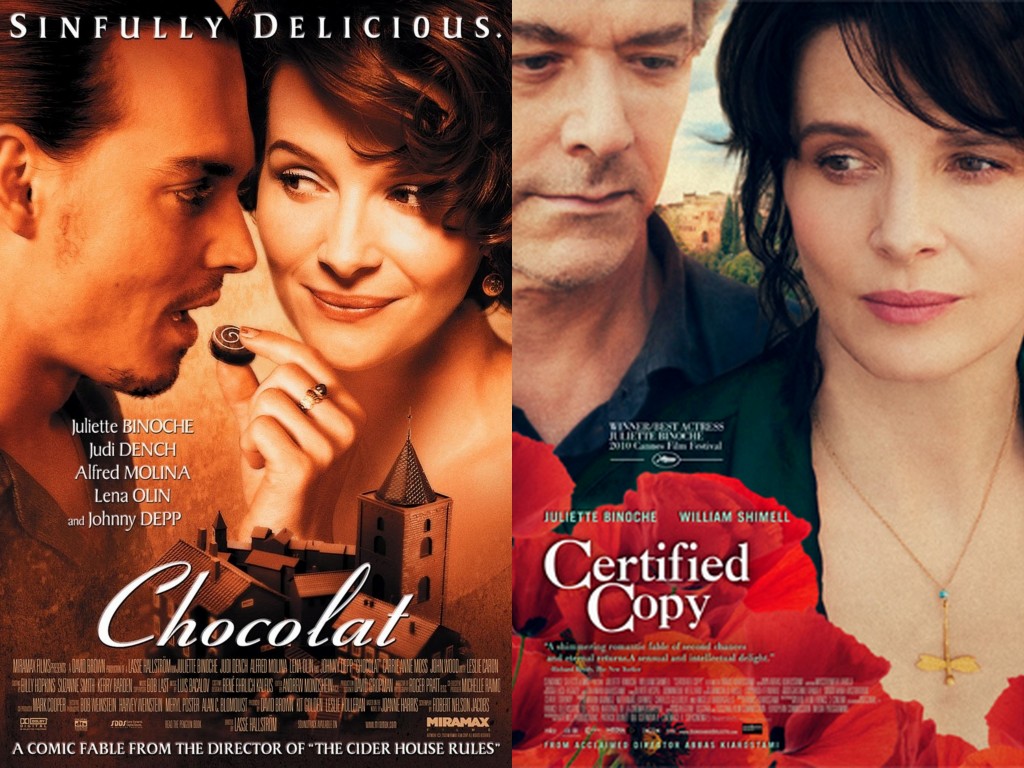 A different set of expectations is built into Certified Copy. As J. Hoberman has noted, Kiarostami’s latest functions exceedingly comfortably as a ‘certified copy’ of a certain brand of talky, travelogue-ready art house cinema. (Even the American one-sheet resembled a generic Miramax release, circa 2000. I even imagined copy for the newspaper ads: ‘SIXTH SMASH WEEK! CERTIFIED COPY IS A CERTIFIED HIT!’) It represents, as well, a stateless, festival-calibrated kind of international cinema—the diffusely-financed, co-co-production with precious few traces of anything politically or culturally specific. In other words, I approached Certified Copy very skeptically.
A different set of expectations is built into Certified Copy. As J. Hoberman has noted, Kiarostami’s latest functions exceedingly comfortably as a ‘certified copy’ of a certain brand of talky, travelogue-ready art house cinema. (Even the American one-sheet resembled a generic Miramax release, circa 2000. I even imagined copy for the newspaper ads: ‘SIXTH SMASH WEEK! CERTIFIED COPY IS A CERTIFIED HIT!’) It represents, as well, a stateless, festival-calibrated kind of international cinema—the diffusely-financed, co-co-production with precious few traces of anything politically or culturally specific. In other words, I approached Certified Copy very skeptically.
And yet, here is a masterpiece, bottomlessly self-aware with respect to all of the above but so sincerely invested in the inner lives and contradictions of Juliette Binoche and William Shimell that it’s affecting, even heartbreaking, moment-to-moment. It’s a puzzle film, to the extent that a certain narrative twist—casual at first, then drolly conceivable—midway through calls into question what we’ve seen before. But it’s a salutary kind of puzzle. Unlike Memento or Mulholland Dr., it doesn’t leave viewers debating the correctness of competing interpretations. The possibilities, resonances, rhymes, and congruities comfortably co-exist; each gesture and line takes on multiple valences and acknowledges the validity of multiple emotions. (In this respect, its pleasures are comparable to those of Uncle Boonmee Who Can Recall His Past Lives.)
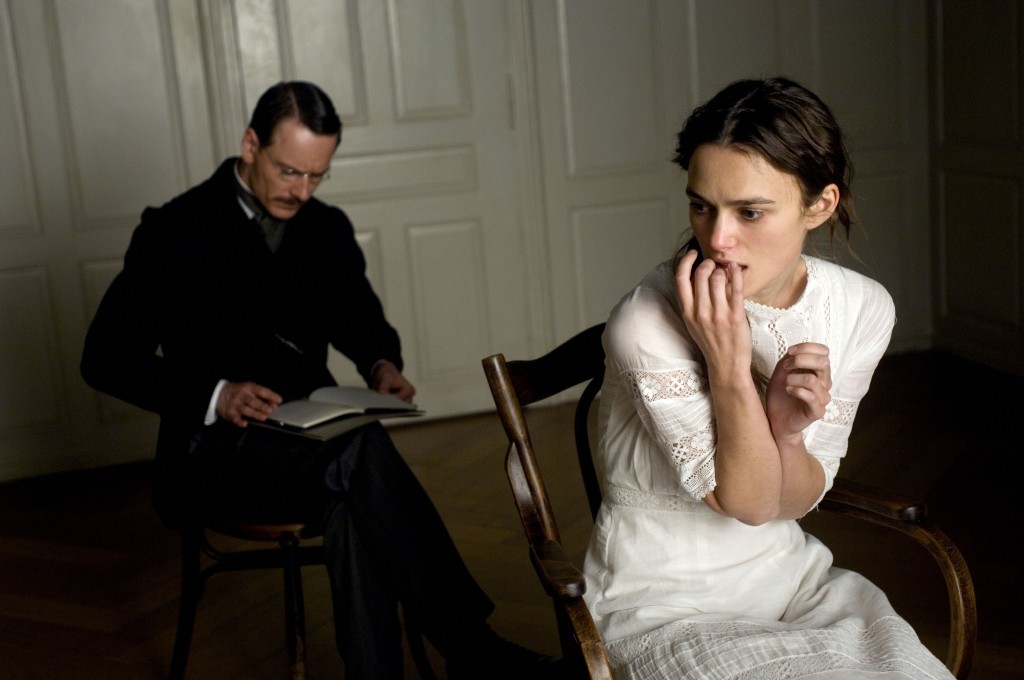 I wish the same could be said of A Dangerous Method, a very skillfully-made movie that delivered exactly what I expected and wanted—and, in doing so, proved disappointing. That is, the material suggests a path for itself: a perfectly naturalistic, non-metaphorical way for David Cronenberg to explore issues of sexuality, bodily revulsion, masochism, and identity dear to the director and his partisans. Speeches and exchanges that would, in any other context, sound academic and rather too on-the-nose here claim the mother of proximate causes: how else would people talk while formulating the tenets of psychoanalysis?
I wish the same could be said of A Dangerous Method, a very skillfully-made movie that delivered exactly what I expected and wanted—and, in doing so, proved disappointing. That is, the material suggests a path for itself: a perfectly naturalistic, non-metaphorical way for David Cronenberg to explore issues of sexuality, bodily revulsion, masochism, and identity dear to the director and his partisans. Speeches and exchanges that would, in any other context, sound academic and rather too on-the-nose here claim the mother of proximate causes: how else would people talk while formulating the tenets of psychoanalysis?
Indeed, the film is exceptional in this respect, not so much in what is said, but in what it means to talk. In A Dangerous Method, the epistolary exchanges are uncommonly riveting because they describe so precisely the feeling of something large and unruly dribbling out over weeks and months, groping towards something upsetting and, yes, dangerous. Spielrein, Jung, and Freud are hurtling towards something they are perhaps unprepared to understand and accept. (The stakes here are somewhat higher than, say, the equally procedural mystery at the heart of The Girl with the Dragon Tattoo.) And yet so many of the film’s oppositions—Jung vs. Freud, Gentile vs. Jew, Bourgeois vs. Volk, Mysticism vs. Science, pipe vs. cigar—feel pre-programmed and foreordained. The script makes exactly the points it wants to make. There’s no friction in the proceedings, no deviation from the thesis tolerated. For all that, the performances of Viggo Mortensen, Michael Fassbender, and especially Keira Knightley abound in resonance even while they lack spontaneity and danger.
WHOSE POWER?
There’s a different kind of oppressiveness operating in The Ides of March: rote cynicism. It’s hard to imagine a timelier premise than the disappointments that come with supporting a supposed political vanguard. And yet The Ides of March isn’t really about this; despite a few applause-worthy stump lines from Candidate Clooney, the plot revolves around the most generic and non-ideological developments. (For a movie about modern politics, Clooney treats abortion in the most apolitical way—as a melodramatic contrivance.) It would be one thing if The Ides of March saw familiar back-stabbing and horse-trading as a tragic impediment to political progress, as we find in Advise and Consent. Instead, this is a movie that likes palace intrigue because it likes being in a palace. (The chummy MSNBC cameos underline this point.) By the end, we see the latest intern climbing the stairs with a round of coffee and it’s treated like the sparrows emigrating back to Capistrano—an operation of clocklike inevitability. The ongoing political disaster is supposed to be entertaining and, on some level, comforting.
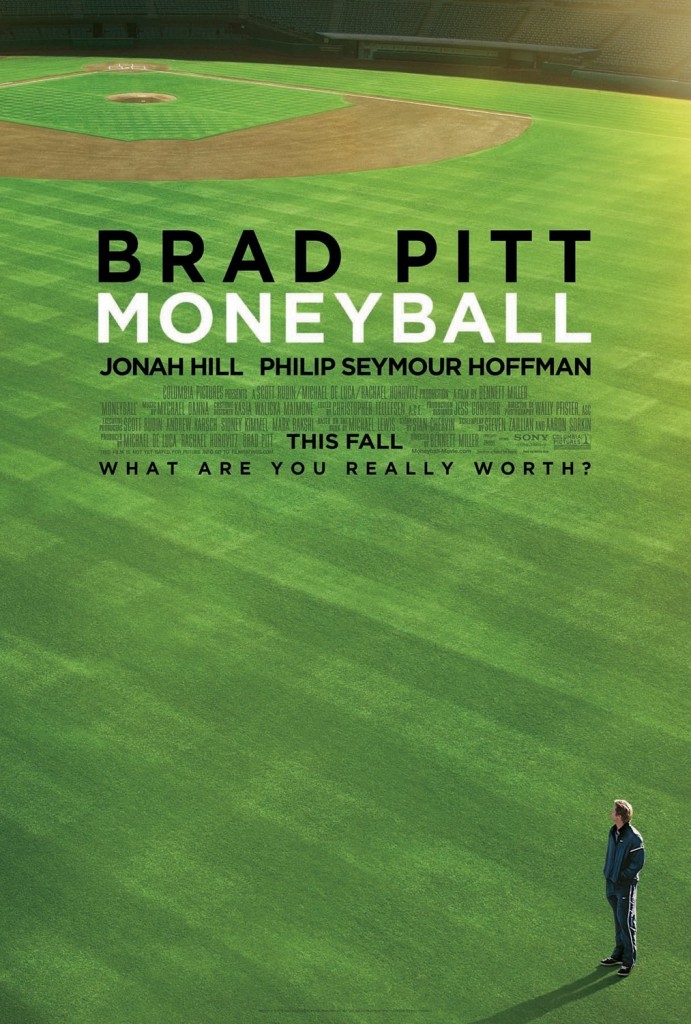 Moneyball has much more craft as a movie, but its message is equally upsetting. Like Aaron Sorkin’s previous project, The Social Network, this one tackles a seismic social shift from the questionable instincts of good ol’ boys to the empirical answers of a new technocratic elite. It scores many solid, on-target points about the failures of the old but evinces an uncritical veneration of the new. Its true subject is power, not the righteous of the one who possesses it. Despite the curious approval of the World Socialist Web Site, Moneyball seems to me less about corrosive effect of capitalism upon modern sports than the virtues of axing players with steely style. (This is an impressive skill, but for whom? In this respect, it reveals as much about its class position as Mitt Romney does when he opines, “I like being able to fire people who provide services to me.” Moneyball’s tagline–“What are you really worth?”–is appalling because it intends this question on the most rudimentary, cash-and-stock-options level.)
Moneyball has much more craft as a movie, but its message is equally upsetting. Like Aaron Sorkin’s previous project, The Social Network, this one tackles a seismic social shift from the questionable instincts of good ol’ boys to the empirical answers of a new technocratic elite. It scores many solid, on-target points about the failures of the old but evinces an uncritical veneration of the new. Its true subject is power, not the righteous of the one who possesses it. Despite the curious approval of the World Socialist Web Site, Moneyball seems to me less about corrosive effect of capitalism upon modern sports than the virtues of axing players with steely style. (This is an impressive skill, but for whom? In this respect, it reveals as much about its class position as Mitt Romney does when he opines, “I like being able to fire people who provide services to me.” Moneyball’s tagline–“What are you really worth?”–is appalling because it intends this question on the most rudimentary, cash-and-stock-options level.)
Two genuinely politically incisive movies failed to garner comparable respect. In Time was a genre movie dumped domestically despite contributions from establishment pros like Andrew Niccol, Roger Deakins, and Colleen Atwood. (It received better treatment overseas.) I can’t remember another movie more sensitive to class markers or the notion that awareness of these markers is a primary weapon of the status quo. It’s in the way that Justin Timberlake fails to recognize that his harried lunch routine gives away his game or the fact that the people with the least time to spare find it perfectly natural to travel by slow, circuitous buses. The ghetto here is defined, totally rationally, by geography: the ubiquity of check-cashing stands and pawn shops is more indicative than the presence of street thugs. (All that, and the CAA offices stand in for the headquarters of the highly profitable mortality industry.) For a big studio picture, In Time is also disarmingly unconflicted about property rights, coming out on the side of armed insurrection against banks without any note of moral hazard.
The politics of J. Edgar are more contentious. Eastwood’s latest, not Tree of Life, was the most divisive film of 2011. Amy Taubin memorably described it as a “late, kick-out-the-jams masterpiece,” but many smart critics refused to engage with J. Edgar, assured that anything less than a full-throated condemnation of Hoover, especially a movie that purported to offer a personal angle, amounted to a white-wash. (I don’t recall similar beyond-the-pale dismissals of Sukurov’s recent cycle on the private lives of Hirohito, Hitler, and Lenin, but those pictures are no one’s idea of aggrandizement.) If J. Edgar was a tribute, it still managed to communicate these essential truths about Hoover: he was a paranoid, racist man, quick to conspire and 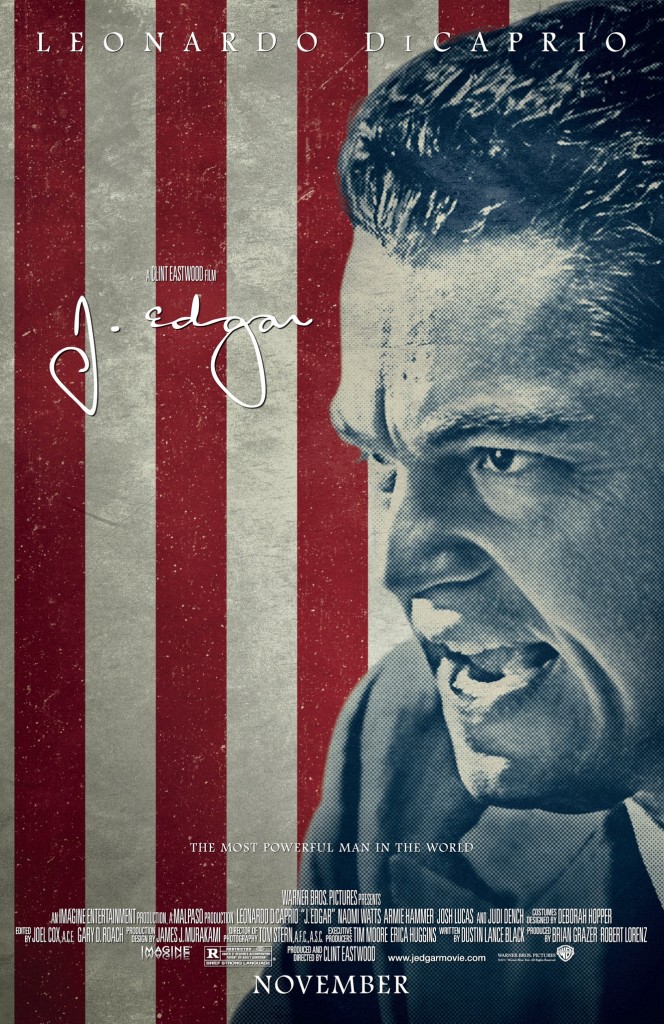 blackmail on the basis of the most preposterous delusions and speculations, prone to lying about and white-washing his own record, a technocratic terror vested with the authority to bend law enforcement power to correct the imagined imbalances in a fantasy America. The absurd historical suppositions and intersections in J. Edgar—that Hoover is too busy deciphering an alleged MLK sex tape to notice the JFK assassination, that he and Clyde Tolson would concoct Eleanor Roosevelt’s love affair with Lorena Hicock while munching on FBI-branded breakfast cereal—are exactly the opposite of hagiography: they suggest that Hoover’s political life is inevitably tied up with own his pettiness.
blackmail on the basis of the most preposterous delusions and speculations, prone to lying about and white-washing his own record, a technocratic terror vested with the authority to bend law enforcement power to correct the imagined imbalances in a fantasy America. The absurd historical suppositions and intersections in J. Edgar—that Hoover is too busy deciphering an alleged MLK sex tape to notice the JFK assassination, that he and Clyde Tolson would concoct Eleanor Roosevelt’s love affair with Lorena Hicock while munching on FBI-branded breakfast cereal—are exactly the opposite of hagiography: they suggest that Hoover’s political life is inevitably tied up with own his pettiness.
J. Edgar isn’t giving Hoover a pass for being a closet case either. In the end, he emerges as a pathetic figure, unable to articulate or recognize his own desires, destined to project his own profound social discomforts onto the nation as a whole. The tragedy is that he got away with it. That said, J. Edgar is also the most radical gay studio film I can recall. In asking the audience to observe the cruel abuse that one ugly old man endlessly inflicts upon another, to contemplate the bond that would keep Tolson sticking by Hoover’s side even as the defeated giant rails against the Nobel Peace Prize Committee from a musty, pre-fab rumpus room, J. Edgar demands empathy for unglamorous bodies and stubborn denials. Armie Hammer’s zombie make-up job succeeds through its inexpressiveness. This may as well have been called The Skin I Live In.
The limitations of J. Edgar are wrapped up in Eastwood’s one-style-fits-all method. Every recent Eastwood movie looks like it was photographed (by the talented Tom Stern) on puke-colored typewriter ribbon, with no attempt to shape or inhabit the material. The best recent films—Meek’s Cutoff, House of Pleasures, Hugo—succeed because they develop their milieus so fully.
RECLAIMING THE PAST
In the case of Meek’s Cutoff, we have a movie that could have been made if the cinema existed in 1845. This contrafactual pre-cinematic experiment—devoid of optical effects, bearing hand-sewn opening titles, night scenes without a sliver of latitude or definition, and crunched sound with minimal recording range—revives the material anxieties of frontier life with staggering effectiveness. (Those decrying Meek’s minimalism are actively denying the densest textural experience this side of Tinker, Tailor, Soldier, Spy.) Its willfully divided society succumbs along lines of arbitrary and expressly mandated sexual difference. Reading it as a re-heated Bush-era jeremiad short-changes the central question of Meek’s Cutoff, namely whether we have the capacity to recognize and correct the problems of the communities we live in.
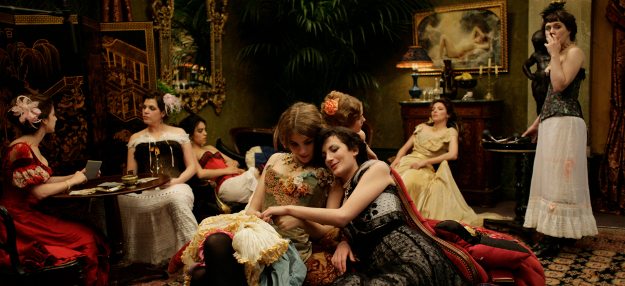 House of Pleasures is less coherent. By the end, you’re not entirely sure that Bertrand Bonnello’s position is any more sophisticated than open nostalgia for the courtly ways of the brothels of the belle epoque. (Hey, it’s better than selling it on the street.) But the effect is surely more complicated: we spend two hours in L’Apollonide and come away with an unshakeable sense of a class eking out safe harbor from the twentieth century. There are incursions: mutilation, disappearances, disease. The whores whisper amongst each other about the decline of the house, unable or unwilling to comprehend the changes outside. We remain inside for all but one sequence and the epilogue. The atmosphere is so well-realized that we recognize every creak of the floor board; at the same time, we never begin to understand the house’s floor plan or topography—relationships of all kinds are kept hazy and deliberately uncontemplated. At the same time, the business end of prostitute is constantly illustrated and understood, in admirable detail. Above all, though, House of Pleasures emphasizes the logic of prostitution—the immediate emotional fixations and justifications that make its artificial order appealing and livable. (It shares this quality of interior journalism with Martha Marcy May Marlene, which makes palpable the emotional pull of an upstate New York cult and the massive psychological subterfuge required to normalize its rancid sexual politics.)
House of Pleasures is less coherent. By the end, you’re not entirely sure that Bertrand Bonnello’s position is any more sophisticated than open nostalgia for the courtly ways of the brothels of the belle epoque. (Hey, it’s better than selling it on the street.) But the effect is surely more complicated: we spend two hours in L’Apollonide and come away with an unshakeable sense of a class eking out safe harbor from the twentieth century. There are incursions: mutilation, disappearances, disease. The whores whisper amongst each other about the decline of the house, unable or unwilling to comprehend the changes outside. We remain inside for all but one sequence and the epilogue. The atmosphere is so well-realized that we recognize every creak of the floor board; at the same time, we never begin to understand the house’s floor plan or topography—relationships of all kinds are kept hazy and deliberately uncontemplated. At the same time, the business end of prostitute is constantly illustrated and understood, in admirable detail. Above all, though, House of Pleasures emphasizes the logic of prostitution—the immediate emotional fixations and justifications that make its artificial order appealing and livable. (It shares this quality of interior journalism with Martha Marcy May Marlene, which makes palpable the emotional pull of an upstate New York cult and the massive psychological subterfuge required to normalize its rancid sexual politics.)
Hugo is a different matter. Its physical milieu is less authentic—more a mish-mash of storybook ideas about Paris, an endless succession of cafes and metro stations and underground passageways. One friend complained about its anachronistic accoutrements for the Eiffel Tower. Another thought it compared unfavorably to Cinema Paradiso and still another found its machine discourse an unconsciously fascist gesture, in league with Leni Riefenstahl.
I find this last criticism particularly baffling, especially because it misstates what I find so moving and singular about Hugo. It’s not the fact that it celebrates cinema or film preservation or Méliès. (Indeed, Méliès isn’t even the primary influence here. After a career predicated on violence, here finally is Scorsese in nakedly vulnerable Borzage regalia. Its cluttered frames also recall, of all things, Baz Luhrmann’s Moulin Rouge!, another work that commits an intemperate act of reanimating and finding meaning in pop history.)
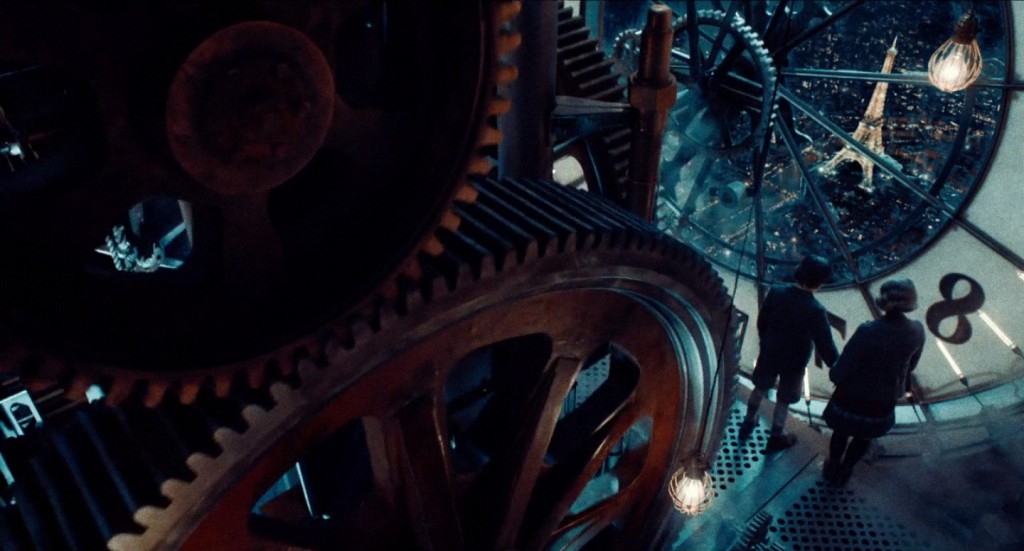 At a time when cinema (and all media) is increasingly becoming a digital simulacrum, Hugo argues for a particular interpretation of the mechanical past, one that values the causality, functionality, and coherence of the machine world. It venerates tinkering and understanding yourself through the systems surrounding you. It possesses a moving belief in the purposefulness of things. That it locates these feelings about celluloid and projectors and automatons and Maltese crosses in the midst of their antithesis—a fully digital, 3-D spectacle—only complicates and amplifies the emotional effect.
At a time when cinema (and all media) is increasingly becoming a digital simulacrum, Hugo argues for a particular interpretation of the mechanical past, one that values the causality, functionality, and coherence of the machine world. It venerates tinkering and understanding yourself through the systems surrounding you. It possesses a moving belief in the purposefulness of things. That it locates these feelings about celluloid and projectors and automatons and Maltese crosses in the midst of their antithesis—a fully digital, 3-D spectacle—only complicates and amplifies the emotional effect.
In any case, its position is more complicated than the proudly retrograde silent cinema pastiche The Artist. Again, expectations are important; before I finally saw The Artist last week, I’d already been asked my opinion about it five or six times, always from people without much previous interest in ‘old movies.’ If The Artist functions as a friendly gateway to the silent classics, then it would be churlish to complain. Yet I can’t embrace the movie or claim that I was moved by it. Its charms, outside of Uggie the dog, feel premeditated, with the approval of the audience placed well ahead of emotional texture.
I don’t much care that The Artist proposes the transition to sound (in 1929!) as an abrupt and senseless event, or that it understates the severity and speed of a nitrate fire in a private screening room. What bothers me is that The Artist defines silent cinema negatively: its lack of sound, lack of color, lack of dialogue. The Artist abounds in nostalgia and affection for the silent era, but treats it like an evolutionary step towards something else. There’s no feeling for the immensely complex interplay of images and text in the best silents. (Part of the problem is that the intertitles in The Artist are functional rather than witty, with none of the economy and wordplay in which period title writers specialized). The recorded score composed and compiled by Ludovine Bource is passable, but it makes The Artist much more of a fixed entity than a real silent, with its variable live accompaniment. What I’m getting at is that The Artist presents silent film as something fun and old-timey, rather than something aesthetically challenging and contested. Even if it aped a silent perfectly, I don’t know how valuable that would be.
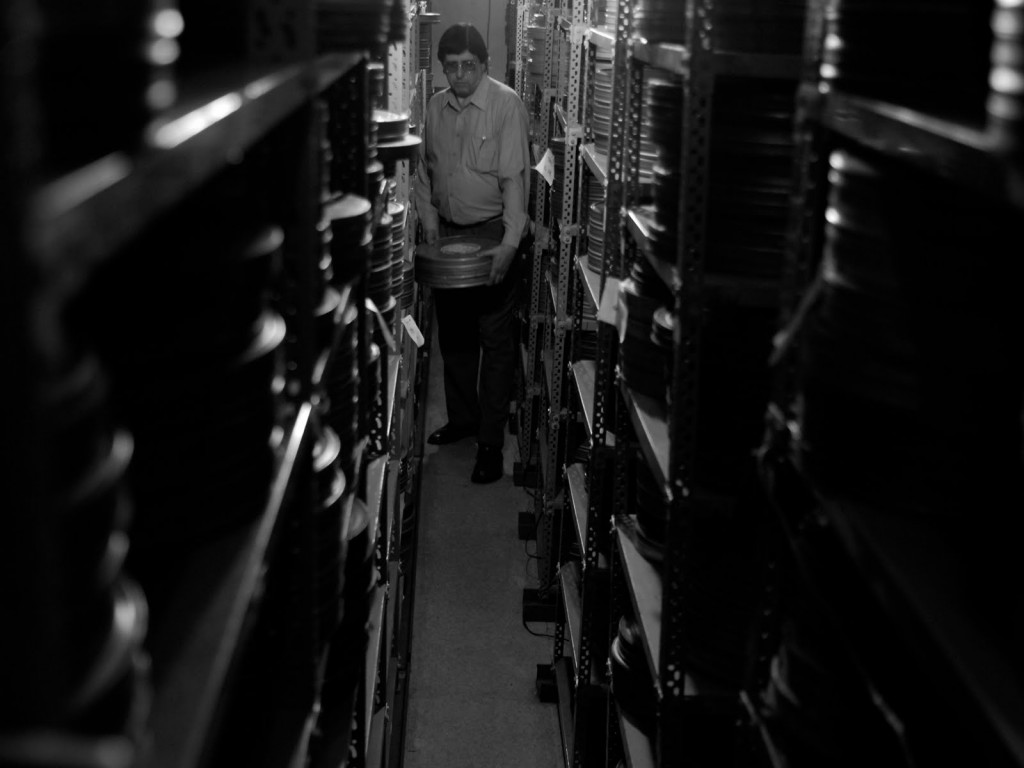 Besides, there are two other films around much more insightful about film history and what it can mean to us today. If admiration for Hugo demands a disclaimer about not simply giving Scorsese a pass on account of the subject matter, A Useful Life should require a notarized contract. For obvious reasons, I would probably be interested in any film about the daily operations of a movie theater (c.f. The Projectionist and Porn Theater), but A Useful Life succeeds on its own terms. This (fictional) chronicle of the dismantling of a cinematheque in Montevideo absolutely nails the feeling of working in a failing theater (or, really, any decrepit cultural bureaucracy). It depicts the accumulating disappointments (six people waiting in line for Greed, again) with great emotional accuracy. Most bracingly, though, when so many movies trade on their core audience’s unquestioning devotion to the medium, this one has the courage to leave everything behind and contemplate a life outside the theater.
Besides, there are two other films around much more insightful about film history and what it can mean to us today. If admiration for Hugo demands a disclaimer about not simply giving Scorsese a pass on account of the subject matter, A Useful Life should require a notarized contract. For obvious reasons, I would probably be interested in any film about the daily operations of a movie theater (c.f. The Projectionist and Porn Theater), but A Useful Life succeeds on its own terms. This (fictional) chronicle of the dismantling of a cinematheque in Montevideo absolutely nails the feeling of working in a failing theater (or, really, any decrepit cultural bureaucracy). It depicts the accumulating disappointments (six people waiting in line for Greed, again) with great emotional accuracy. Most bracingly, though, when so many movies trade on their core audience’s unquestioning devotion to the medium, this one has the courage to leave everything behind and contemplate a life outside the theater.
No such escape is possible in the monumental Autobiography of Nicolae Ceauseșcu, an engrossing three-hour assemblage of official archival footage of the Romanian dictator. Without any voice-over or captions—any contextual interpretation, really—we learn the truth of Ceauseșcu’s rule through footage commissioned with exactly the opposite intent. Propaganda, like any genre, subsists on tropes that illuminate the very things it tries to obscure. The Autobiography views these moments not as fabrications but vital history. It speaks to the value of compromised artifacts.
A Tentative Ranking
01. Meek’s Cutoff, directed by Kelly Reichardt (OSCILLOSCOPE)
02. Certified Copy, directed by Abbas Kiarostami (IFC/SUNDANCE SELECTS)
03. Hugo, directed by Martin Scorsese (PARAMOUNT)
04. House of Pleasures, directed by Bertrand Bonnello (IFC MIDNIGHT)
05. Uncle Boonmee Who Can Recall His Past Lives, directed by Apichatpong Weerasethakul (STRAND)
06. A Dangerous Method, directed by David Cronenberg (SONY PICTURES CLASSICS)
07. A Useful Life, directed by Federico Veiroj (GLOBAL FILM INITIATIVE)
08. The Autobiography of Nicolae Ceaușescu, directed by Andrei Ujică (FILM DESK)
09. The Future, directed by Miranda July (ROADSIDE ATTRACTIONS)
10. Tinker Tailor Soldier Spy, directed by Tomas Alfredson (FOCUS FEATURES)
11. The Tree of Life, directed by Terrence Malick (FOX SEARCHLIGHT)
12. J. Edgar, directed by Clint Eastwood (WARNER BROS.)
13. In Time, directed by Andrew Niccol (20TH CENTURY FOX)
14. Poetry, directed by Lee Chang-dong (KINO LORBER)
15. Tuesday After Christmas, directed by Radu Muntean (KINO LORBER)
16. Martha Marcy May Marlene, directed by Sean Durkin (FOX SEARCHLIGHT)
17. Silent Souls, directed by Aleksei Fedorchenko (SHADOW DISTRIBUTION)
18. The Skin I Live In, directed by Pedro Almodóvar (SONY PICTURES CLASSICS)
19. Le quattro volte, directed by Michelangelo Frammartino (KINO LORBER)
20. The Beaver, directed by Jodie Foster (SUMMIT)
21. Restless, directed by Gus van Sant (SONY PICTURES CLASSICS)
22. Rise of the Planet of the Apes, directed by Rupert Wyatt (20TH CENTURY FOX)

